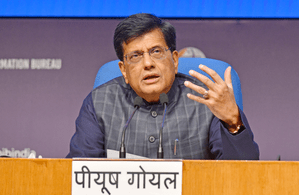
The Viksit Bharat Ambassador event marked a welcome change from University auditoriums and townhalls to a mini-marathon at DU’s North Campus on Wednesday and saw the participation of celebrity guests from different fields, besides hundreds of teachers and students.
Acclaimed badminton player Saina Nehwal and actor Rajkummar Rao participated in the ‘Run for Viksit Bharat event’ at Delhi University, with an aim to spread the message of how they can turn ‘ambassadors’ and contribute to the Viksit Bharat 2047 vision, as envisaged by Prime Minister Narendra Modi.
Saina Nehwal said that India is realising its own potential and the citizens must not see themselves as lesser than anyone. Citing an example of badminton, she said “Earlier China and Korea used to dominate the game but today, Indian players have given them a run for their money.”
Rajkummar Rao termed the Viksit Bharat event as a path-breaking initiative and said that the combined effort of countrymen will help achieve this target with ease.
The actor, having graduated from Delhi University, also expressed happiness over returning to the campus after a long gap and urged everyone to fulfil their responsibility by casting their vote.
Over the past few months, the Viksit Bharat Ambassador event has made a conscious effort to connect and inspire citizens from every sphere of life pertaining to students, working class and spirituality, corresponding with the multifarious growth and development in various sectors. The Run event at Delhi University has given fresh vigour to the organisers as well as ‘Ambassadors’ to break new grounds and add new ‘agents of change’ for making India a ‘Viskit Bharat’ by 2047.











